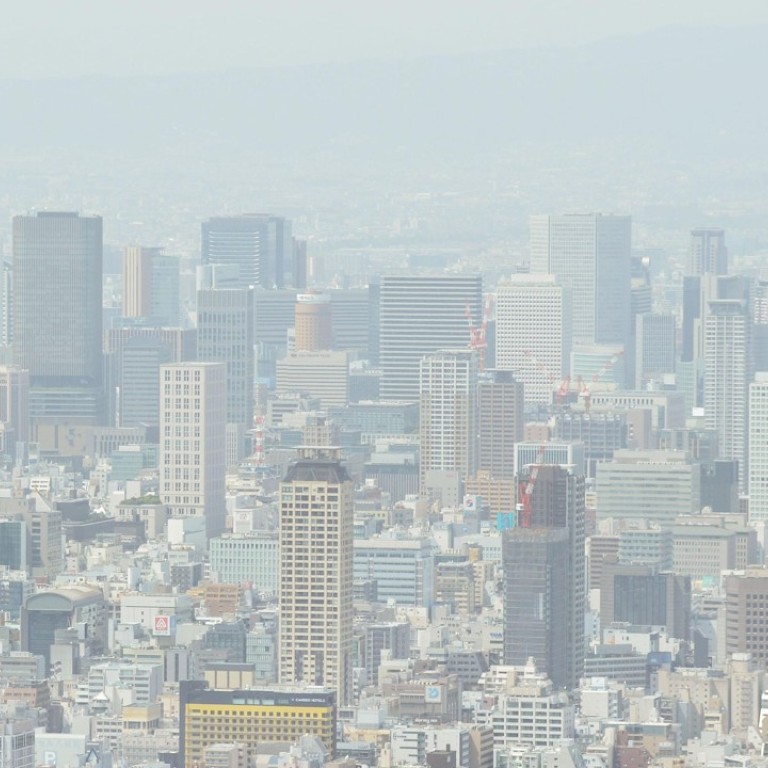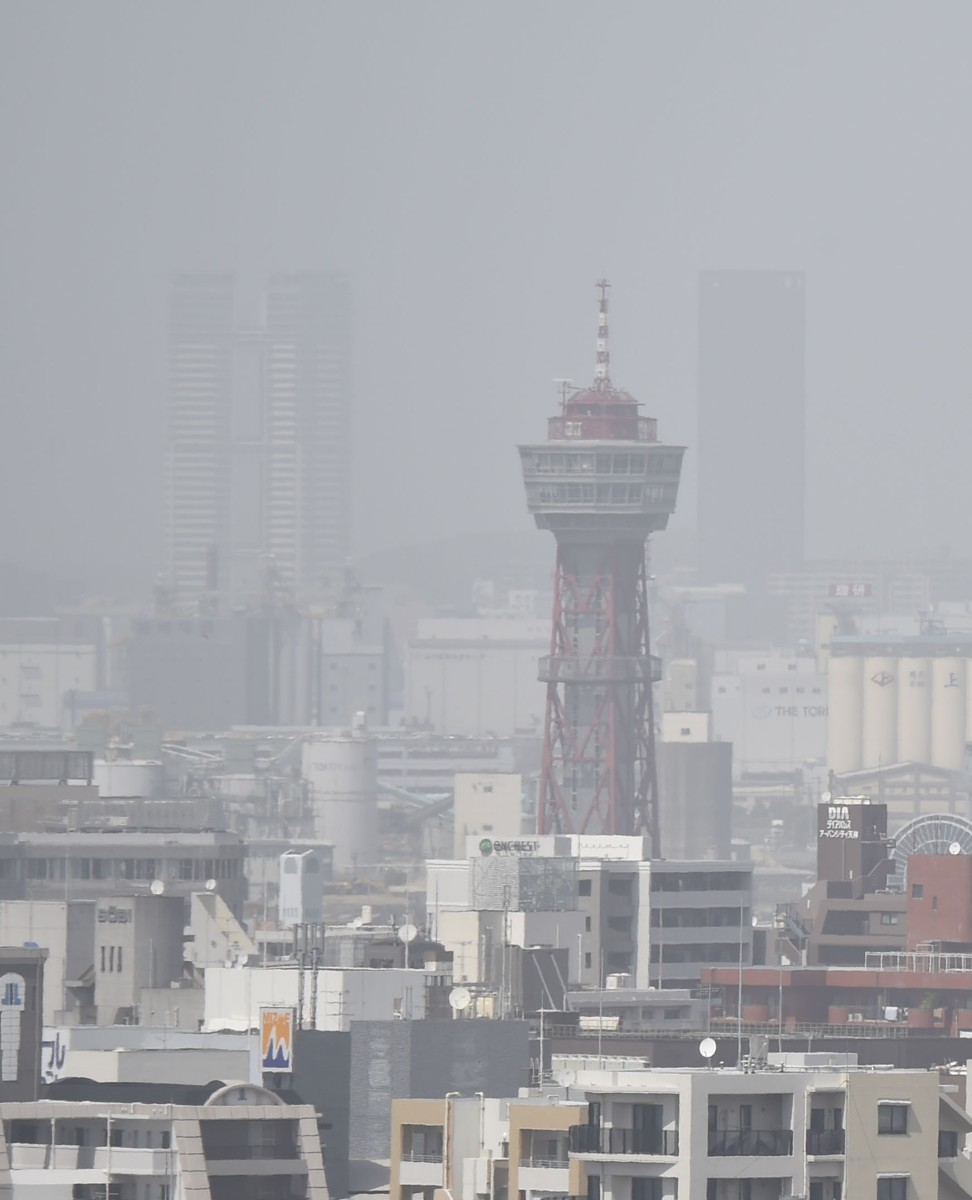
True grit: clouds of Chinese dust descend on southern Japan
For decades, residents of southern Japan have endured annual clouds of yellow sand and grit borne by winds from China.
Now a newer threat is being blown eastwards: the ultrafine PM2.5 particulate matter that has been linked to serious health complaints.
Large parts of southern and central Japan have been coated in Chinese dust in recent days, with concentrations of PM2.5 soaring in the city of Fukuoka.

“The readings yesterday were above 40 micrograms and at one point reached 70 micrograms per cubic meter, which is well beyond the government’s standards,” said Daisuke Tsuchida, a researcher with the Fukuoka Institute of Health and Environmental Sciences.
“It was the worst we have experienced so far this year, but the good news is that the average today is lower again,” he told The South China Morning Post.
“When levels get that high, we recommend that people avoid activities outside, particularly the elderly, the young and anyone with a respiratory complaint or any other illness that could be worsened by exposure to such pollution,” he said.
Authorities called on anyone who had to go out to wear a face mask.
“It looked like a haze that just covered everything,” said Kaoru Otani, an official with the Fukuoka International Association. “When it comes, everything is blurred, you can feel it in your eyes and it makes you cough.
“It is really bad for old people and when the city issues a warning then the children cannot go outside to play and we have to close all our windows,” she said.
Southern Japan, particularly Kyushu, has long been familiar with clouds of Chinese dust in springtime, but the problem with PM2.5 pollution is a relatively new issue. Rare a decade ago, it is now becoming an annual occurrence and is increasingly present to varying degrees throughout the year, said Otani.

And while areas of Japan geographically closest to China are invariably worst affected, footage aired on Japanese televisions has been of eerie orange-yellow silhouettes of skyscrapers in Osaka while residents of Tokyo are now complaining of a sand-coloured sky and itchy eyes.
PM2.5 particles are usually generated by fossil-fuel-burning activities, such as metal processing and other heavy industrial applications, as well as vehicle emissions.
Experts say this form of airborne pollution can trigger inflammatory responses both in the body’s respiratory tract and blood vessels. Over time, they say, it can cause thickening of the walls of arteries and associated problems.
The airborne dust problem has also reached extremes in South Korea. On Saturday South Korean authorities issued health warnings over the threat posed by such pollution, which reached the highest levels so far in 2017 in much of the country.
Last year, the environment ministers of Japan, China and South Korea met in the Japanese city of Shizuoka for discussions on reducing pollution.
PM2.5 was high on the agenda, with the final communique committing the three nations to cooperate to tackle air pollution.
Additional reporting by Kyodo

